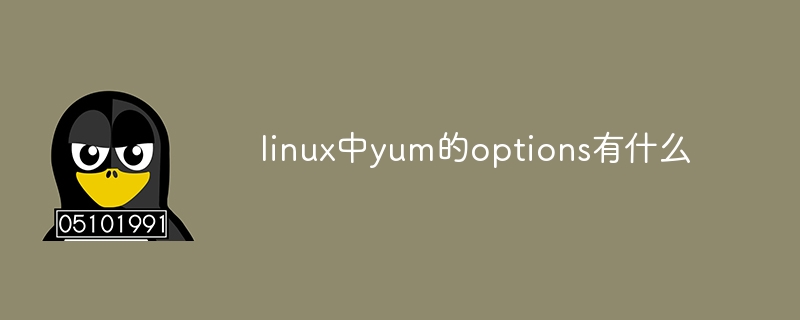Home >Operation and Maintenance >Linux Operation and Maintenance >What are the options of yum in linux?
In Linux, Yum is a package management tool used to manage software packages on RPM-based distributions. Common Yum options and their functions are: 1. "-y, --assumeyes" , used for batch installation or update without manual intervention; 2. "-q, --quiet", only displays necessary output information; 3. "-d, --downloadonly", only downloads the software package without installing it ;4. "--nogpgcheck", allows the installation of unauthorized or unsigned software packages

Operating system for this tutorial: Linux5.18.14 system, Dell G3 computer.
In Linux, Yum (Yellowdog Updater, Modified) is a package management tool used to manage software packages on RPM-based distributions. Yum provides a range of options for controlling and customizing the installation, update, and uninstallation of software packages. The following are some common Yum options and their effects:
-y, --assumeyes: automatically answer "yes" and skip the confirmation prompt, used for batch installation without manual intervention or updated.
-q, --quiet: Quiet mode, only displays necessary output information, reducing redundant and cluttered information.
-d, --downloadonly: Only download the software package without installing it, suitable for installing software packages in an offline environment.
--nogpgcheck: Skip GPG signature verification, allowing installation of unauthorized or unsigned packages.
These options can be combined as needed to meet specific package management requirements. By using the right options, the package management process can be automated, silent, streamlined and customized.
Please note that Yum may have slightly different options and syntax in different Linux distributions. Therefore, when using Yum, please refer to the relevant distribution's documentation or command help for more detailed and accurate information.
The above is the detailed content of What are the options of yum in linux?. For more information, please follow other related articles on the PHP Chinese website!